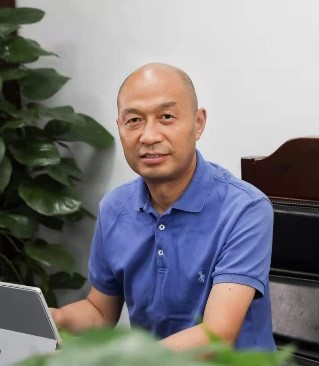Yiwang Chen
Flexible Thin Film Electronics
Institute of Polymers and Energy Chemistry, Nanchang University, 999 Xuefu Avenue, Nanchang 330031.
Email: ywchen@ncu.edu.cn
Biography
Dr. Yiwang Chen is a full professor of Chemistry at Nanchang University and Jiangxi Normal University. He received his Ph. D from Peking University in 1999 and conducted his postdoctoral work at Johannes Gutenberg-Universität Mainz and Philipps-Universität Marburg in Germany as awarded an Alexander von Humboldt fellowship. He joined the Nanchang University in 2004. He has been honored by the National Science Fund for Distinguished Young Scholars in 2014. Currently he is serving as a Vice-president of Jiangxi Normal University since 2019 and director of Institute of Polymers and Energy Chemistry (IPEC) at Nanchang University since 2004. He has ever been Dean of the College of Chemistry at Nanchang University since 2009-2019. His research interests include polymer solar cells, perovskite solar cells, supercapacitors, electrocatalysis for zinc-air batteries and fuel cells, and intelligent elastomers and fibers. He has published more than 500 research papers and 40 invention patents as well as 4 books. His research project has been awarded “second class prize of science and technology in universities of China” in 2019.
Abstract for Presentation
Integration Design and Printing Process of Flexible Perovskite Solar Cells
The grain size, grain boundary defects and ion migration of lattice as well as compactness of interface buffer layer significantly affect the stability of perovskite solar cells. While, the process conversion from spin-coating to printing with an increasing scale is the only way for large-area perovskite solar cells fabrication. The problems including preparation of flexible transparent electrodes, stability and matching of interface layer, and obstructing function, the ion migration suppression and defects repair of grain boundaries, fabrication of flexible perovskite solar cells and its self-healing need to be solved to finally realize the large scale perovskite solar cells with efficiency and stability via printing process.
The mussel-bioinspired crosslinking oxide with nanocrystals to overcome the inherent brittleness of the inorganic interface layer, and the atomic layer deposition method endowed with the highly dense inorganic interface layer are proposed to improve the stability of the perovskite solar cell. A self-adhesive polymer encapsulated perovskite interface layer is proposed to prevent the erosion of the perovskite layer by humidity, while the introduction of EVA glue interface layer can effectively improve the long-term stability, humid resistance and bending durability of perovskite solar cells. Systematically adopting integrated technology and vertebral structure to release stress and solve the self-repairing problem of perovskite fracture, the manufacture of flexible perovskite solar cells is fully realized. By optimizing printing equipment, adjusting ink stability and colloidal chemistry as well as perovskite grain growth kinetics during the printing process, the printing preparation of high-efficiency rigid and flexible large-area modules can be fulfilled.
References
[1] Jia Yang#, Wangping Sheng#, Ruiming Li#, Lingyun Gong, Yanyan Li, Licheng Tan*, Qianqian Lin*, and Yiwang Chen*, Adv. Energy Mater. 12 (15), 2103652 (1-10) (2022).
[2] Baojin Fan, Jian Xiong, Yanyan Zhang, Chenxiang Gong, Feng Li, Xiangchuan Meng, Xiaotian Hu*, Zhongyi Yuan, Fuyi Wang, Yiwang Chen*, Adv. Mater. (2022). 10.1002/adma.202201840
WELCOME TO CHINA TO ATTEND THE ICANS
23-26 August, Nanjing, China
Connect with us:



